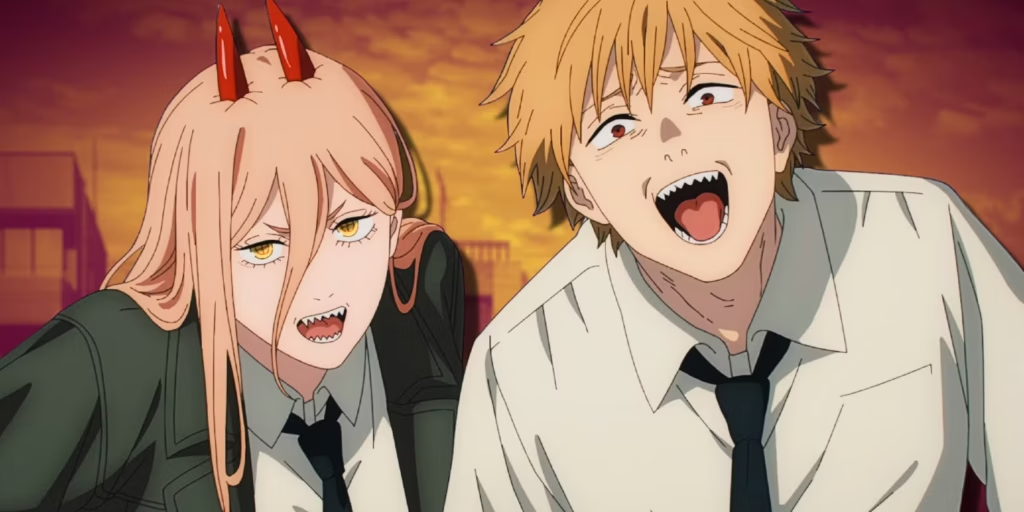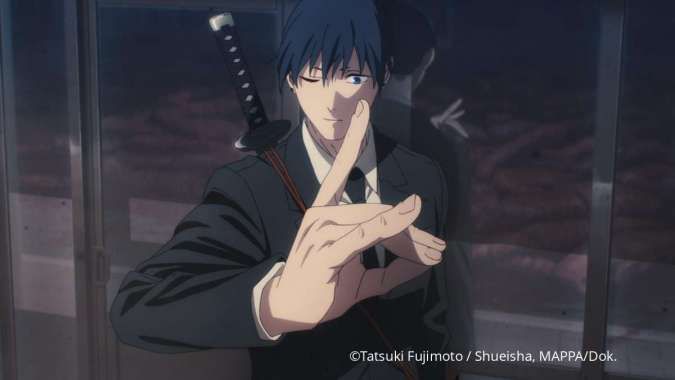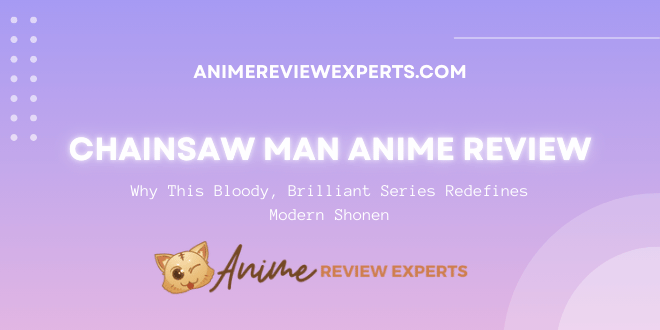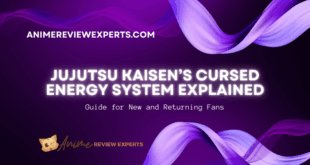When Chainsaw Man finally premiered in October 2022, it wasn’t just another anime season — it was a global event. The manga had already built a rabid fanbase thanks to Tatsuki Fujimoto’s unorthodox storytelling, absurd humor, and willingness to kill off beloved characters without hesitation. Readers knew the adaptation would be intense, but MAPPA’s marketing campaign took expectations to another level.
The trailers were cinematic, featuring hyper-realistic backgrounds, smooth character animation, and devil designs that looked ripped straight from Fujimoto’s ink-stained pages. Social media exploded with frame-by-frame trailer analysis, speculation about voice casting, and heated debates over whether MAPPA could capture the manga’s chaotic energy.
When Episode 1 dropped, it confirmed that Chainsaw Man wasn’t going to pull its punches — both figuratively and literally. The opening scene, a quiet and almost mundane moment of Denji talking about selling body parts to pay off debt, immediately contrasted with the explosive gore of his first devil hunt. This whiplash — shifting from grim realism to absurd violence — became the series’ signature tone.
The hype didn’t fade after the premiere. Each weekly episode release trended worldwide on Twitter/X, with fan-made memes, reaction videos, and theory threads flooding the internet. International anime events screened Chainsaw Man episodes to packed rooms, while merchandise like Pochita plushies and Denji’s chainsaw replica props flew off shelves.
What Makes It Different from Typical Shonen

At first glance, Chainsaw Man might seem like just another supernatural battle shonen — a protagonist with a unique power, a world threatened by monstrous enemies, and a motley crew of allies. But Tatsuki Fujimoto’s world flips the genre on its head, trading idealistic heroism for raw survival instincts and absurd, often unsettling humor.
Unconventional Protagonist
Denji’s introduction is almost the anti–shonen hero origin story. Instead of a gifted youth destined for greatness, we meet a teenager deep in debt, working as a devil hunter for the yakuza to pay off what his father left behind. His dreams?
“A normal life… jam on my bread… maybe a girlfriend.”
This is a far cry from Naruto Uzumaki wanting to be Hokage or Izuku Midoriya dreaming of becoming the world’s top hero. Denji’s goals are embarrassingly modest — and that’s the point. His relatability comes from wanting what many viewers want: stability, love, and comfort.
What makes Denji even more unusual is his moral ambiguity. He isn’t motivated by justice or altruism — he’s fine killing devils for cash and, later, for public service, but his main drive is selfish survival. That’s not to say he’s heartless; it’s just that his moral compass is grounded in lived hardship rather than a hero’s code.
Dark Humor and Violence
The fusion of slapstick absurdity with grotesque violence is one of Chainsaw Man’s calling cards. One minute Denji is celebrating the idea of touching a woman’s chest, the next he’s covered in gore, ripping through devils with chainsaw arms.
Take the Bat Devil arc:
- Setup: Denji risks everything to save Power’s cat, Meowy.
- Payoff: Power betrays him to the Bat Devil, leading to a grotesque fight where Denji literally tears the devil apart midair.
- Punchline: After the carnage, Denji’s main concern isn’t the trauma of battle, but the fact that his “date” with Power was a lie.
This tonal balance is risky, but Chainsaw Man pulls it off because it never pretends the world isn’t brutal. Humor doesn’t lessen the danger — it makes the moments of relief more precious.
This blending of extremes has drawn comparisons to Jujutsu Kaisen, which also mixes comedy with high-stakes violence, but Chainsaw Man pushes it further, often lingering on absurdity longer than expected. Fujimoto’s refusal to sanitize either the comedy or the horror is part of what sets the series apart.
Character Depth and Development
While Chainsaw Man is a bloody spectacle on the surface, it’s the characters — flawed, vulnerable, and constantly evolving — that make it unforgettable. Fujimoto builds them with a mix of dark humor, tragedy, and small glimpses of hope, making their fates hit much harder when the inevitable comes.
Denji’s Motivations
When we first meet Denji, he’s dirt-poor, malnourished, and selling his own organs to pay off his father’s debts. His companion, Pochita — a tiny, chainsaw-headed devil — is his only friend and family. Denji’s early goals are refreshingly unheroic:
“I just wanna be able to toast bread with jam… maybe have a girlfriend… maybe even score before I die.”
This mix of crude humor and genuine longing for stability defines Denji’s arc. As he becomes the Chainsaw Man, his opportunities grow, but his inner void remains. Even when he gains better food, housing, and a place in Public Safety, he struggles with questions of identity:
- Is he human or devil?
- Does he deserve happiness after all the killing?
- Are his desires truly his own, or is he being manipulated?
The Makima arc drives these questions home. She dangles affection and purpose in front of him, only to exploit his need for love — turning Denji’s humanity into a weapon against him.
Power’s Chaotic Loyalty
Power bursts into the story as a whirlwind of selfishness, deceit, and violence. She’s introduced as a liability, betraying Denji to the Bat Devil in exchange for her cat’s safety. But over time, she develops a sibling-like bond with him that becomes one of the series’ emotional anchors.
One of their most touching moments comes after a traumatic battle, when Power is visibly shaken. Denji stays with her, eating food together in silence. There are no grand speeches — just quiet companionship in a world where death is constant.
Aki Hayakawa’s Slow Transformation
Aki starts as Denji’s cold, by-the-book partner who finds him immature and reckless. Over the course of the series, we learn his backstory: his family was slaughtered by the Gun Devil, fueling his desire for revenge.
Yet, as he works alongside Denji and Power, Aki’s rigid worldview softens. He becomes a reluctant big brother figure, looking out for them even as he knows their line of work is a death sentence. His fate in the manga — and its anime foreshadowing — is one of the most devastating moments in modern shonen, precisely because we see how much he’s changed before it all comes crashing down.
These three characters embody Chainsaw Man’s heart: messy, flawed individuals trying to find meaning in a chaotic world. When they laugh together, it feels genuine; when they suffer, it hits harder because we’ve seen their humanity.
Themes and Symbolism
Beneath the chaos, gore, and offbeat humor, Chainsaw Man is loaded with thematic weight. Tatsuki Fujimoto weaves existential questions and biting social commentary into his story, making it far more than just another action-packed shonen.
Survival in a Cruel World
From the very first chapter, the world of Chainsaw Man makes its cruelty clear. Devils roam freely, feeding on human fear. Public Safety Devil Hunters risk their lives daily, knowing that their service offers no guarantee of survival or even recognition.
For Denji, survival begins as a bare-minimum goal — enough to get food in his stomach and a roof over his head. But as the story progresses, survival takes on more emotional dimensions:
- Physical survival: Battling devils, avoiding injury, and keeping allies alive.
- Emotional survival: Finding meaning and joy despite constant death around him.
- Moral survival: Holding onto some shred of humanity in a world that dehumanizes hunters and devils alike.
The Gun Devil arc especially underscores this. Even the most skilled hunters fall in seconds, reminding viewers that skill and experience mean little when the world itself is hostile and unpredictable.
This theme resonates beyond anime — it mirrors real-life struggles where people fight not just to stay alive but to preserve dignity and identity under pressure.
The Cost of Desire
If Attack on Titan is about the cost of freedom, Chainsaw Man is about the cost of desire. Every major character’s downfall is tied to wanting something badly enough to take dangerous risks:
- Denji desires comfort and love — leaving him vulnerable to Makima’s manipulation.
- Power desires safety for her cat — leading her to betray Denji early on.
- Aki desires revenge — trapping him in contracts that shorten his lifespan.
Fujimoto uses these desires to explore how our goals can both motivate and destroy us. One of the most telling exchanges comes from Denji’s conversation with Makima:
Makima: “If you could have anything in the world, what would it be?”
Denji: “Three meals a day… a normal life.”
It’s a simple answer, but in the Chainsaw Man universe, even such modest dreams carry heavy costs.
This theme is amplified visually in the anime. Denji often appears dwarfed by urban landscapes or overwhelmed by massive devils — physical reminders that the world will always be bigger and more dangerous than his desires.
For another anime that blends action with deep symbolic storytelling, you might enjoy Attack on Titan Ending Explained: Themes, Symbolism, and Hidden Details.
Art Style and Animation Quality

When MAPPA took on Chainsaw Man, they weren’t just adapting a popular manga — they were bringing to life a title known for chaotic energy, brutal action, and surreal comedic beats. The stakes were high, and MAPPA’s approach was both ambitious and unconventional.
MAPPA’s Unique Approach
One of MAPPA’s boldest moves was treating Chainsaw Man like a cinematic project rather than a standard weekly anime. This shows in several ways:
- Cinematic Framing – Many scenes use grounded, realistic camera angles instead of typical anime “flat” shots. For example, Denji’s morning routine in Episode 1 is filmed almost like a live-action indie film, emphasizing the drab, suffocating atmosphere of his life.
- Realistic Backgrounds – The detailed, urban backdrops pull viewers into a believable Tokyo. Empty streets at night, cramped apartments, and fluorescent-lit convenience stores all add to the grounded tone.
- Episode-specific Endings – Instead of a single ending song, every episode has a unique ending sequence with custom visuals and music. These endings range from chaotic collages to quiet, emotional montages, giving each episode a distinct mood and identity.
This artistic variety mirrors Tatsuki Fujimoto’s own love of cinema and storytelling experimentation, which is one reason fans praised MAPPA for staying true to the spirit of the source material.
Controversial CGI Usage
Not all of MAPPA’s choices were universally loved, and the use of CGI in devil battles became one of the hottest talking points.
- The Good: CGI allowed MAPPA to animate Denji’s chainsaw form with fluid, dynamic movements during intense battles. The fight against the Bat Devil in Episode 3, for example, showcases fast camera sweeps and debris-filled chaos that would have been near-impossible with only hand-drawn frames.
- The Mixed: Some viewers felt the CGI, while high quality, still clashed slightly with the otherwise 2D aesthetic. In slower scenes, the contrast was noticeable, especially in close-ups.
However, compared to less-polished CGI in other anime, Chainsaw Man’s integration is far smoother. MAPPA’s animators also blended CGI with traditional effects like hand-drawn smoke, dust, and blood splatter to keep the visual tone consistent.
This combination of cinematic artistry and technical experimentation ensures that Chainsaw Man feels unlike any other shonen adaptation — a show that looks and moves with deliberate style, even when drenched in blood and chaos.
Reception and Cultural Impact
Critic Reviews
Critics widely praised Chainsaw Man for its bold storytelling, memorable characters, and high production values. Many highlighted its ability to balance humor, horror, and heartfelt moments — a rare feat in anime.
Fan Community Discussions
The fan community’s reaction has been electric. Memes, fan art, and detailed theory threads flood social media after every episode drop. Some debates — like whether Denji is a “selfish” protagonist or a refreshingly honest one — continue to rage online, keeping engagement high between seasons.
For fans looking for more anime to binge while waiting for Chainsaw Man’s next season, check out Best Platforms to Stream Anime and Movies Legally in 2025.
Conclusion – Why Chainsaw Man is Here to Stay
Chainsaw Man isn’t just another action-packed shonen — it’s a genre-bending, emotionally charged story that challenges traditional hero narratives. With its unique blend of absurd humor, brutal violence, and poignant character moments, it has cemented itself as one of the most important anime of recent years.
MAPPA’s adaptation captures the chaotic brilliance of Fujimoto’s work, ensuring that even viewers unfamiliar with the manga are drawn into its bloody, bizarre world. Whether you watch for the fights, the laughs, or the feels, Chainsaw Man offers something unforgettable.
If you’re ready to dive deeper into anime worlds that mix style and substance, you might also enjoy Top Anime Merchandise for Fans in 2025: Must-Have Collectibles and Where to Get Them and Best VTubers to Watch in 2025: A Guide to the Virtual Stars Lighting Up the Internet.
 AnimeReviewExperts
AnimeReviewExperts

